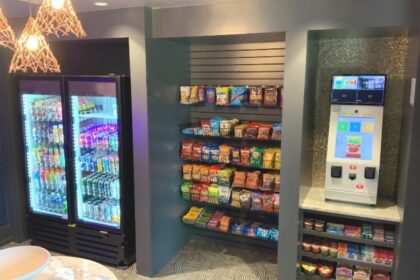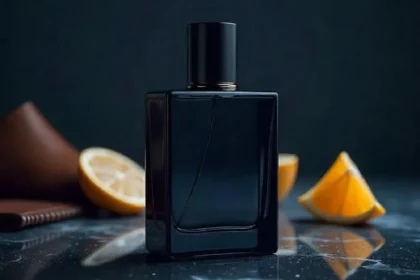Where Functionality Meets Style
When it comes to home exteriors, the roof often serves as more than just a protective layer; it sets the tone for the entire structure. From modern suburban homes to rustic countryside retreats, homeowners are increasingly seeking roofing solutions that combine aesthetics with long-lasting performance. While durability remains a core concern, today’s architectural trends lean heavily toward stylish design. And this is where thoughtful roof installation plays a crucial role, offering both form and function in one seamless structure.
Modern Materials with Timeless Appeal
The materials used in contemporary roofing have evolved dramatically over the years. Homeowners no longer have to choose between a strong roof and an attractive one. Metal roofs, for example, are making a big comeback thanks to their industrial-chic appearance and impressive lifespan. Available in a variety of colors, finishes, and textures, metal roofing can effortlessly complement a range of design preferences — from sleek minimalist homes to bold, modern structures.
On the other hand, composite shingles have become a favorite for those who prefer the traditional look of asphalt but want a more advanced product. These shingles mimic the look of wood, slate, or clay while offering better resistance to weather, algae, and wear. Meanwhile, clay and concrete tiles continue to attract fans for their ability to add character and old-world charm, particularly in Mediterranean or Southwestern-style homes.
Architectural Styles and Roof Shapes
Another critical design consideration is the shape and pitch of the roof. While flat roofs are popular in ultra-modern builds, pitched roofs are more commonly associated with classic styles. The key is to ensure the roofline complements the architecture. For example, a steep gable roof can enhance the storybook charm of a cottage-style house, while a low-slope hip roof better suits a contemporary ranch-style home.
The use of dormers, overhangs, and decorative trims also adds dimension and style to rooflines. These features not only contribute to the aesthetic but also provide functional benefits such as extra attic space, improved ventilation, and better water runoff.
Color Psychology in Roofing
Color plays a significant role in the visual impact of a roof. It can alter the perception of the building’s size, create harmony with the surrounding landscape, or even affect energy efficiency. Lighter colors tend to reflect sunlight, making them ideal for homes in warmer climates, while darker hues absorb heat and can be beneficial in colder regions.
Color coordination with other exterior elements like siding, windows, and doors is essential. A gray or black roof can create a dramatic contrast against white or cream exteriors, giving the home a bold yet elegant appearance. Earthy tones, such as brown, terracotta, and olive green, blend well with natural landscapes and are especially suited for rustic or traditional designs.
Eco-Friendly and Sustainable Roofing Trends
With sustainability becoming a priority in home design, roofing has followed suit. Green roofing systems — actual vegetative layers grown over waterproof membranes — are gaining popularity in urban areas. These systems provide insulation, reduce stormwater runoff, and promote biodiversity, all while offering a unique, organic aesthetic.
Cool roofs are another innovative solution. Designed with reflective materials, they reduce heat absorption and lower indoor cooling costs. Recycled roofing products, made from materials like rubber, plastic, or reclaimed wood, offer eco-conscious homeowners stylish options that don’t compromise on quality or looks.
Innovative Roofing: Where Technology Joins Design
Technological advancements are reshaping how we think about roofing. Integrated solar panels are one example of this shift. Unlike traditional bulky solar units, these new designs blend seamlessly into the roofing material itself, maintaining visual appeal while offering energy efficiency.
There are also smart sensors and ventilation systems that monitor moisture levels, temperature fluctuations, and structural movement. These innovations help extend the life of the roof and alert homeowners to maintenance needs before severe damage occurs. Best of all, many of these systems can be incorporated subtly without affecting the aesthetics of the roof.
Regional Influences and Weather Considerations
Where you live has a significant impact on what style and material are most suitable for your roof. In areas prone to hurricanes or heavy snowfall, durability and resilience become top priorities. This doesn’t mean sacrificing style — modern advancements ensure even the toughest materials can be customized to reflect personal design preferences.
For instance, homes in coastal regions might benefit from metal roofing coated to resist saltwater corrosion. In contrast, alpine homes may use composite materials that resemble wood shakes but withstand freezing conditions. It’s all about balancing environmental requirements with your vision.
Blending Tradition and Innovation
A compelling roofing design often strikes a balance between traditional charm and modern innovation. Some of the most visually captivating homes combine classic materials with updated profiles or mix different textures for visual interest. Think of a rustic farmhouse with reclaimed wood beams and a standing seam metal roof, or a contemporary villa with a sleek tile roof and integrated lighting.
This harmony between the old and the new offers homeowners the best of both worlds — aesthetic richness rooted in tradition and cutting-edge technology that ensures performance and sustainability.
Lighting and Roof Accents
One underrated but impactful aspect of roof design is the use of lighting and decorative accents. LED roofline lighting can subtly highlight architectural details, while copper gutters and downspouts add elegance and durability. Finials, weather vanes, and cupolas provide classic charm and a sense of craftsmanship, helping to elevate the entire appearance of the home.
For homeowners who love nighttime curb appeal, integrating lighting solutions into the roofline can transform the property into a visual masterpiece after dark. This integration not only boosts aesthetic value but also adds safety and visibility.
Roof as a Design Statement
More than just a shield from the elements, the modern roof has become a canvas for creativity. With advancements in materials, construction techniques, and design tools, homeowners and architects now have the freedom to experiment like never before. Whether aiming for a minimalist, bold, traditional, or futuristic look, the roof plays an integral role in defining the home’s character.
As design preferences continue to evolve, one thing remains constant — the desire for a roof that does more than protect. Homeowners want solutions that speak to their sense of style, adapt to their regional environment, and perform reliably for years to come. With thoughtful planning and creative vision, the possibilities for roofing design are nearly limitless.



